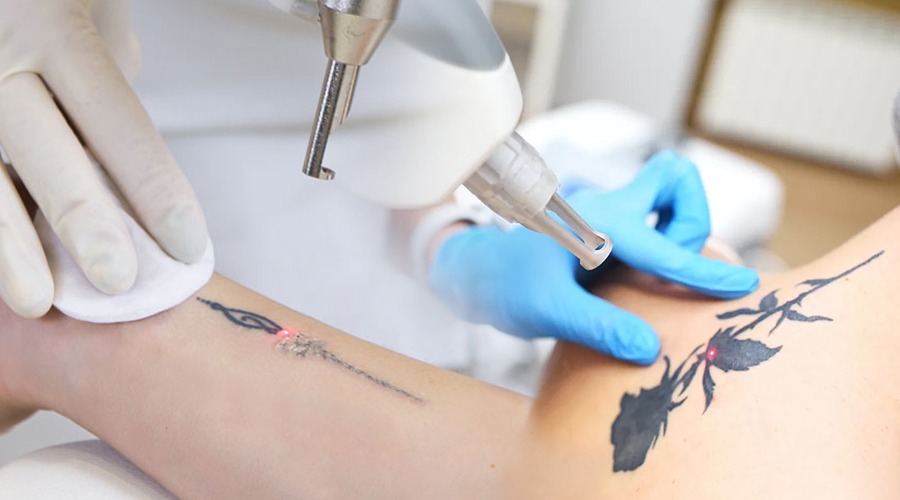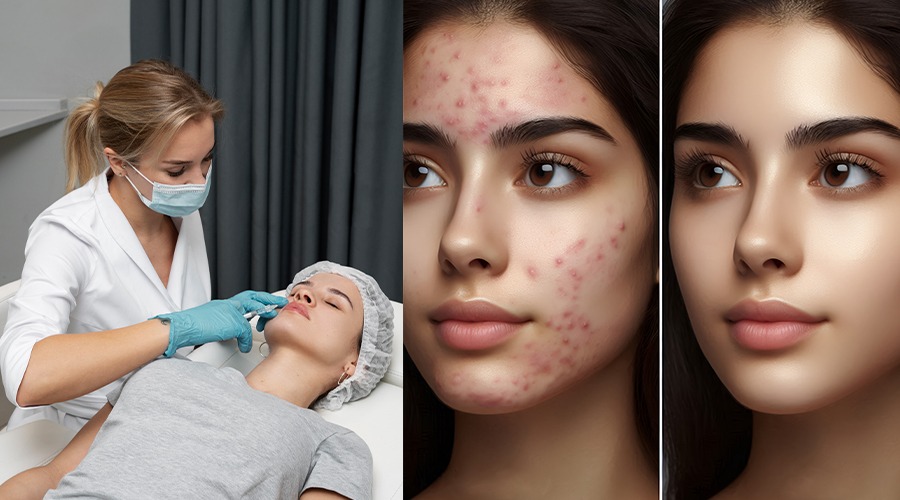
Understanding the Growing Trend of Tattoo Removal
Tattoos have long been a form of self-expression, with millions of people around the world adorning their bodies with meaningful designs. However, as lifestyles change and preferences evolve, the demand for tattoo removal is steadily rising. Understanding the reasons behind this growing trend sheds light on the benefits, procedure, healing process, and methods to minimize scarring associated with tattoo removal.
The Benefits of Tattoo Removal and Why People Choose to Remove Their Tattoos
Tattoo removal offers a range of benefits, prompting individuals to seek professional assistance in erasing inked memories from their skin. Whether it's a change in personal beliefs, career aspirations, or simply outgrowing the design, there are numerous reasons why people opt for tattoo removal. Professionally administered removal procedures ensure safe and effective results, allowing individuals to move forward with confidence.
A Step-by-Step Guide to the Tattoo Removal Procedure
Evaluation and Consultation with a Specialist:
The journey begins with an evaluation and consultation with a tattoo removal specialist. During this initial appointment, the specialist assesses the tattoo's size, color, depth, and location to determine the most suitable removal technique.
Choosing the Right Removal Technique - Laser Treatment vs. Surgical Excision:
Two primary removal techniques are commonly used: laser treatment and surgical excision. Laser treatment involves targeting the tattoo with high-intensity light beams to break down the ink particles gradually. Surgical excision entails the meticulous removal of the tattooed skin, followed by the careful stitching together of the surrounding tissue to facilitate proper healing.
The Treatment Session - What to Expect During the Procedure:
Regardless of the chosen technique, the treatment session typically begins with the application of a numbing cream to minimize discomfort. During laser treatment, the specialist directs the laser over the tattooed area, emitting pulses of light to fragment the ink. Surgical excision entails precise removal of tattooed skin, followed by suturing the adjacent tissue.
Post-Treatment Care Instructions for Optimal Healing:
Following the procedure, proper post-treatment care is crucial for optimal healing and to minimize the risk of complications. This includes keeping the treated area clean and dry, avoiding exposure to sunlight, and following any additional instructions provided by the specialist.
Healing Process After Tattoo Removal: Tips for Quick Recovery and Minimal Discomfort
The healing process after tattoo removal varies depending on factors such as the size and complexity of the tattoo, as well as the chosen removal technique. Generally, mild discomfort, redness, swelling, and blistering may occur in the days following treatment. However, these symptoms typically subside within a week, and the skin begins to heal.
Post-treatment care plays a significant role in promoting quick recovery and minimizing discomfort. Keeping the treated area clean and dry, applying prescribed ointments or moisturizers, and avoiding activities that could irritate the skin are essential steps in the healing process. It's also essential to protect the skin from sun exposure by wearing protective clothing or applying sunscreen to prevent hyperpigmentation.
Minimizing Scarring After Tattoo Removal: Effective Strategies and Preventive Measures
While tattoo removal procedures aim to eliminate ink from the skin, scarring is a potential side effect that concerns many individuals. Fortunately, several strategies and preventive measures can help minimize scarring and promote smoother, healthier skin.
First and foremost, choosing a reputable and experienced tattoo removal specialist is essential to minimize the risk of complications and achieve optimal results. Additionally, following proper post-treatment care instructions, such as keeping the treated area clean and avoiding picking at scabs, can significantly reduce the likelihood of scarring.
In cases where scarring does occur, various treatments and techniques can help improve the appearance of scars. These may include topical treatments, such as silicone gel or sheets, laser therapy, microdermabrasion, or surgical revision procedures. Consulting with a dermatologist or plastic surgeon can provide personalized recommendations based on individual needs and skin type.
The Final Impact of Tattoo Removal Journey on Your Skin and Your Life
Tattoo removal marks the beginning of a new chapter for individuals seeking to erase unwanted ink and move forward with confidence. From evaluating the benefits and procedure to navigating the healing process and minimizing scarring, the journey towards tattoo removal is a transformative experience.
By understanding the intricacies of tattoo removal and taking proactive steps to promote healing and minimize scarring, individuals can embrace their faded past and embrace a brighter future. Whether it's a small symbol or a larger design, the decision to remove a tattoo is a personal one that ultimately leads to renewed skin and newfound freedom.
FAQs about Tattoo Removal
1. What are the benefits of tattoo removal?
Tattoo removal offers individuals the opportunity to erase unwanted tattoos, allowing for a fresh start and increased confidence. It can also help individuals avoid potential social stigma or career limitations associated with visible tattoos.
2. How does tattoo removal work?
Tattoo removal typically involves using laser technology to break down the ink particles in the skin, allowing the body's immune system to gradually remove them. Different wavelengths of light target specific ink colors, making the process effective for various tattoo types.
3. What is the healing process like after tattoo removal?
After tattoo removal, the treated area may experience redness, swelling, and minor blistering, which typically subside within a few weeks. It's crucial to follow post-treatment care instructions provided by your practitioner to ensure proper healing and minimize the risk of complications.
4. Can tattoo removal cause scarring?
While modern laser tattoo removal techniques are designed to minimize scarring, there is still a risk, particularly if post-treatment care instructions are not followed diligently. Choosing a qualified and experienced practitioner and adhering to proper aftercare can help reduce the likelihood of scarring.
5. Are there any risks or side effects associated with tattoo removal?
Potential risks and side effects of tattoo removal may include temporary discomfort, skin irritation, changes in skin pigmentation, and, in rare cases, scarring or infection. However, these risks can be minimized by selecting a reputable clinic and following recommended precautions.
6. Is tattoo removal suitable for all skin types?
While advancements in laser technology have made tattoo removal effective for a wide range of skin tones, individuals with darker skin may be at a higher risk of experiencing changes in pigmentation or scarring. Consulting with a qualified practitioner is essential to assess suitability and minimize risks.
7. Can tattoos be completely removed with laser treatment?
While laser tattoo removal can significantly fade or remove tattoos, complete removal may not always be achievable, particularly for multicolored or heavily saturated tattoos. However, significant fading can often be achieved, providing individuals with the option to pursue cover-up tattoos if desired.





